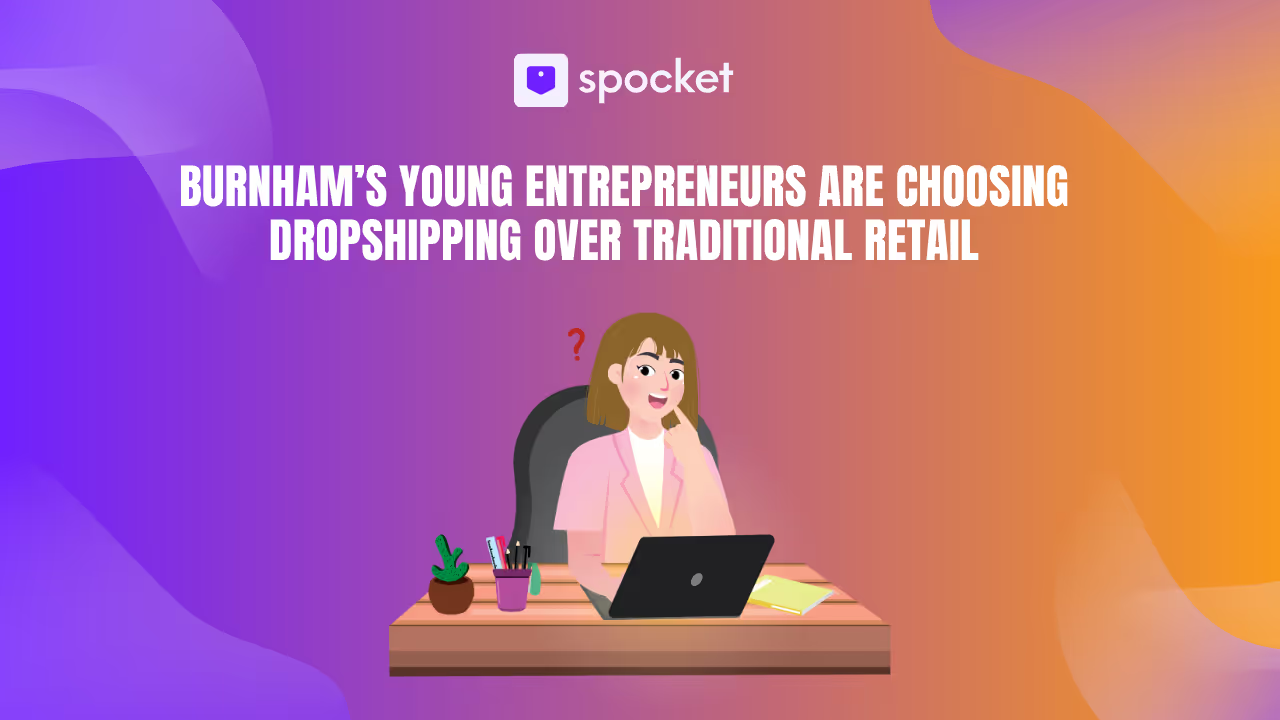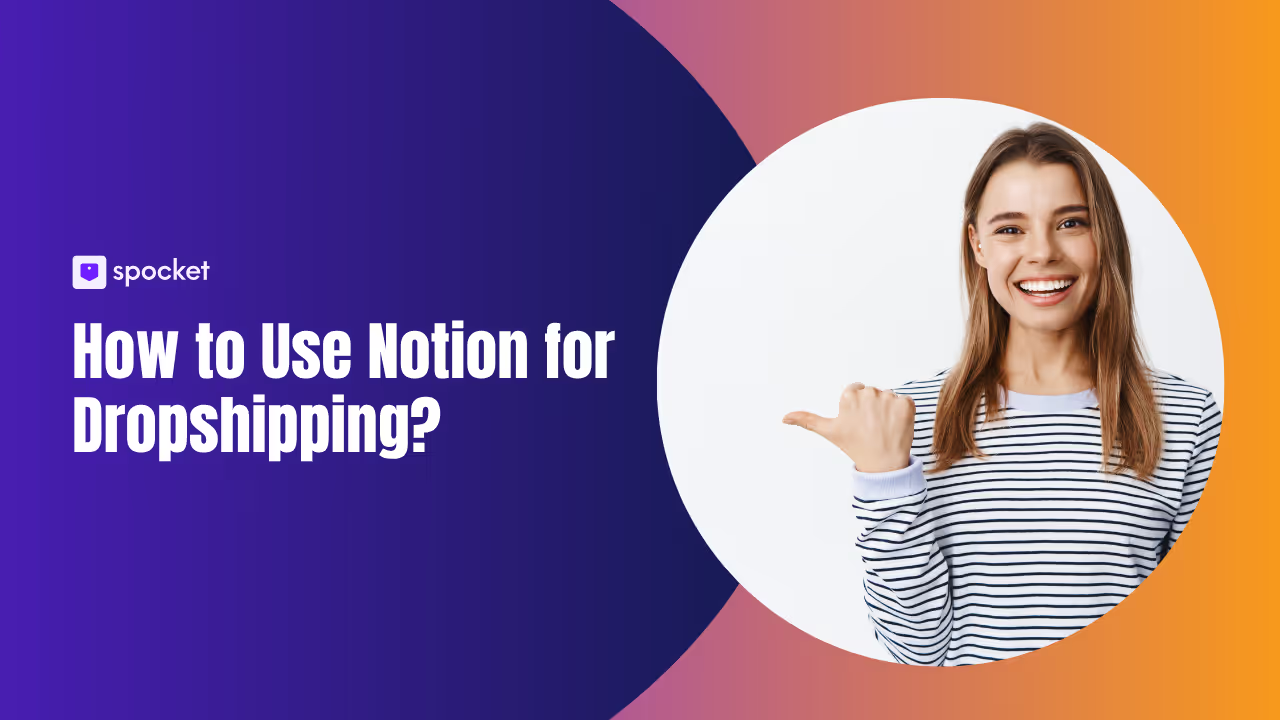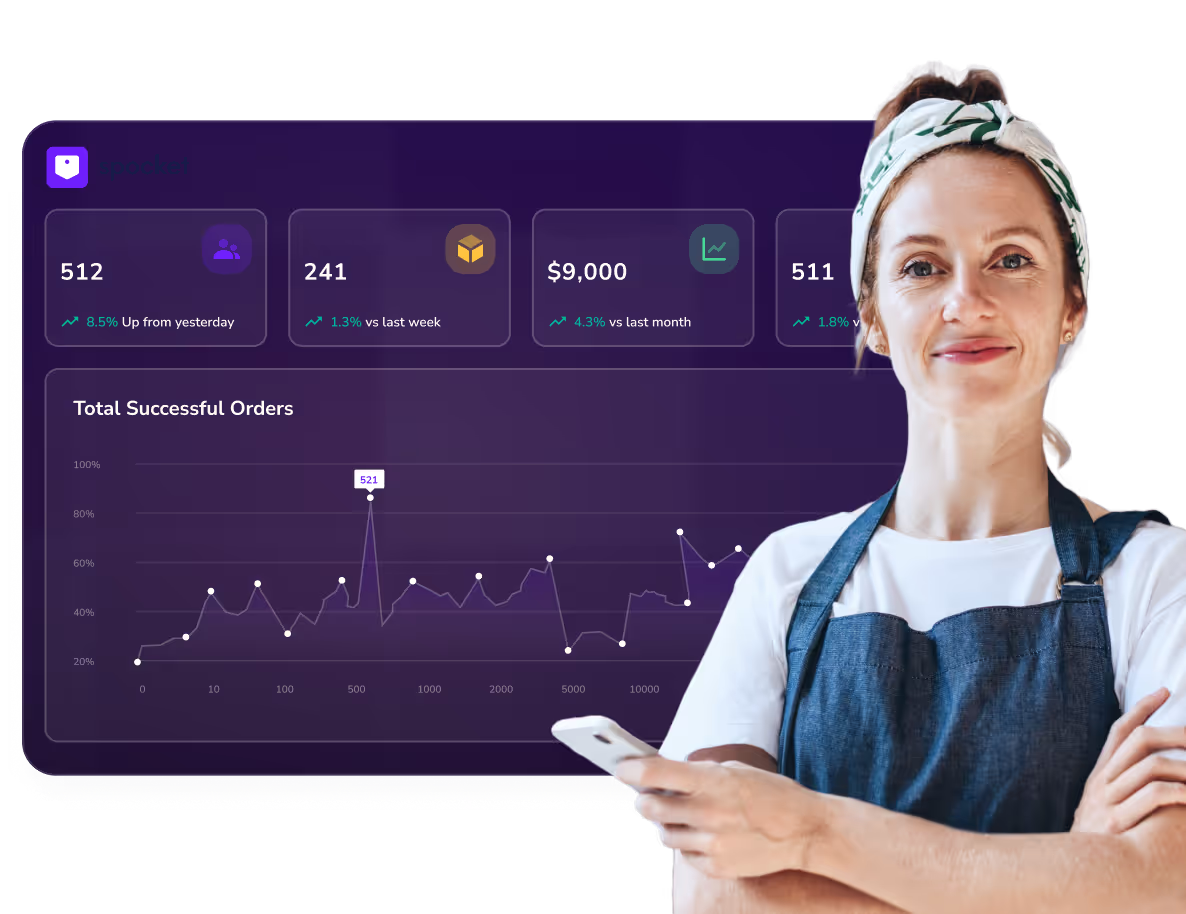Walk through Burnham on a Saturday afternoon and you’ll notice a quiet shift taking place. The high street, once a hub for ambitious young shop owners, feels different. Instead of setting up storefronts, many of Burnham’s twenty-somethings are hunched over laptops in coffee shops, testing product ideas and building online stores that reach far beyond their town.
Many dropshipping entrepreneurs Burnham are proving that you don’t need deep pockets or shelves stacked with stock to launch a business. A few hundred pounds, a sense of what’s trending, and reliable suppliers are often enough to get started.
But is dropshipping really the smarter choice compared to traditional retail? What’s gained, and what’s lost? This guide takes you inside the trade-offs, why local Gen-Z founders are choosing the online route, and how you can follow a clear, practical playbook to start your own business with confidence.
Dropshipping vs Traditional Retail in Burnham: Costs, Risks, and Control—An Honest 2025 Comparison
Before we dive into why so many young founders are picking dropshipping, it’s worth understanding what makes it different from the shopfronts we all know. This isn’t just theory—it’s about how each model feels to run, what it costs to get started, and the trade-offs you live with every day as a business owner.
What Running Each Model Really Feels Like (Day-to-Day)
Ask anyone running a traditional shop in Burnham, and they’ll tell you their day starts with deliveries, stock checks, and making sure shelves look right for customers walking in. Face-to-face sales and customer service take up most of their time.
Dropshipping flips that picture. Instead of unpacking boxes, entrepreneurs spend their hours online—testing ads, answering customer queries, and scanning TikTok or Instagram for the next product trend. It’s lighter on logistics, but you give up some control over packaging and shipping speed.
Startup Costs, Margins, and Break-Even—UK Mini-Table
Opening a shop on the Burnham high street could easily demand several thousand pounds just in rent, deposits, and initial stock. Add insurance and fixtures, and the costs rise quickly before you’ve even sold a single item.
Dropshipping, on the other hand, lets young founders start with as little as a few hundred pounds—covering a website, a domain, and a small ad budget. The catch is thinner margins, averaging 15–30% compared to 40–70% in retail. You trade bigger upfront risk for leaner profits but faster validation.
Control, Brand Building, and Scale—Trade-Offs That Matter
With a shop, you control everything—from how products are displayed to the conversation you have at the till. That level of control builds brand trust but grows slowly.
In dropshipping, your reach can skyrocket overnight with the right product, but the brand experience depends heavily on suppliers. A delayed delivery or poor-quality item reflects on you, even though you never touched the stock.
When a Hybrid Model Outperforms Either One Alone
Some Burnham entrepreneurs are experimenting with a middle ground. They test products through dropshipping, and when something sells consistently, they order small batches to sell at local pop-ups or weekend markets.
This hybrid model reduces financial risk while keeping that face-to-face connection retail still does best. It’s not an either-or decision—sometimes the smartest path is blending both.
Why Gen-Z in Burnham Favors Dropshipping: Speed to Test, Low Capital, TikTok-Ready Niches
Now that we’ve compared dropshipping with retail, it’s easier to see why younger founders are leaning one way. For Burnham’s Gen-Z, the appeal isn’t just about cost—it’s about speed, flexibility, and building businesses that match how their generation already shops and spends online.
Micro-Budgets and Fast Feedback Loops
Most young entrepreneurs don’t have the savings to cover deposits, rent, or bulk stock orders. Dropshipping works because it lowers the barrier to entry—you can test a store with £300–£500 instead of thousands.
And the learning curve is faster. Within days of running a campaign, you know which product is catching attention and which one to drop. That rapid feedback loop keeps risk small and growth potential high.
Gen-Z Shopping Behaviours You Can Leverage
Burnham’s young buyers are discovering products on TikTok and Instagram more than in physical stores. They don’t walk the high street to browse—they scroll, save, and share trends.
That behaviour creates a natural match for dropshipping. A trending phone case or piece of jewelry spotted on TikTok can become a store’s bestseller overnight. For Gen-Z founders, it’s about speaking the same language as their customers.
Local Reality: Nationwide Reach vs High-Street Footfall
High-street retail in Burnham is limited by geography. You’re mostly selling to the people who walk by. For some products, that audience simply isn’t big enough to sustain a business.
Dropshipping bypasses that problem. A founder in Burnham can sell across the UK from day one, tapping into a much larger customer pool. Still, local pickup or weekend markets can complement online sales when trust and quick delivery matter most.
The UK Reality Check: VAT, Customs, and Post-Brexit Shipping—What Young Founders Must Know
So far, dropshipping sounds fast and flexible—but there’s a UK twist many first-time entrepreneurs overlook. Taxes, customs, and shipping rules can make or break your store if you don’t plan ahead. Understanding these realities early protects both your profits and your reputation.
VAT at Point of Sale and Threshold Basics (Plain English)
In the UK, Value Added Tax (VAT) isn’t something you can ignore. If your sales pass £85,000 in a year, you must register for VAT. But even before you hit that level, marketplaces and payment processors often expect you to handle VAT correctly.
For dropshippers, this means knowing whether VAT is included in the supplier’s price, and making sure you’re not undercharging customers. Clear pricing prevents headaches later and keeps your business compliant.
Post-Brexit Friction: Customs, Delays, and Surcharges
Since Brexit, shipping from outside the UK has become trickier. Parcels can get stuck in customs, and customers may face unexpected duties on arrival. Nothing frustrates a buyer more than paying more than they expected.
Many Burnham entrepreneurs learn this the hard way—refunds pile up, reviews suffer, and trust takes a hit. Factoring customs into your delivery times and pricing is essential if you want happy, repeat customers.
Mitigation Moves
The safest way forward? Source from UK or EU suppliers wherever possible. This reduces delays, avoids surprise charges, and builds customer confidence with faster delivery.
If you do work with overseas suppliers, always order samples first. That way you know the actual lead time, the quality of packaging, and the true cost of shipping before you list the product online.
Burnham 90-Day Playbook: From Zero to First 50 Sales (Week-by-Week)
Knowing the theory is one thing, but having a clear roadmap makes all the difference. Many young entrepreneurs stall because they don’t know what to focus on first. This 90-day playbook breaks down the journey into manageable chunks, helping you reach your first 50 sales with clarity and confidence.
Weeks 1–2: Niche, Offer, and Proof
Start small. Pick one audience you know well—maybe students, gym-goers, or pet owners—and test three product ideas. Use TikTok trends, online marketplaces, and keyword tools to check demand.
At this stage, your goal isn’t perfection. It’s about proving people are willing to pay for your product idea before you commit too much time or money.
Weeks 3–4: Store Build That Feels Trustworthy
Set up your store with the basics: clear product pages, shipping information, and return policies. Many young stores lose sales because they skip these trust signals.
Add small touches that show credibility—like a contact page, simple FAQs, and clear delivery timelines. Customers should feel confident enough to buy without second-guessing your legitimacy.
Weeks 5–6: Traffic Sprints for Tiny Budgets
With your store live, it’s time to drive traffic. Run small ad tests with just £5–£10 per day. Test two audiences with three creative angles each. After three days, cut what isn’t working and double down on winners.
At the same time, post three TikToks or Reels per week. Even short, casual videos can spark interest when they feel authentic. Reach out to micro-influencers for low-cost content swaps.
Weeks 7–8: CX and Ops Tightening
By now, you’ll have early customers. Use their feedback to tighten operations. Set response-time goals for messages, create a template for late-delivery updates, and track refund or return patterns.
This is where reputation is built. Delivering fast, honest communication—even when problems happen—can turn a one-time buyer into a repeat customer.
Weeks 9–12: Scale or Hybrid Pop-Up
If you’ve found a winning product, increase ad spend gradually and refine your targeting. Focus on building repeatable processes rather than chasing every trend.
At the same time, consider a hybrid step: stock a small quantity of your best-seller and test it at Burnham’s local markets. Pop-ups give you face-to-face customer insights while feeding your online growth with real-world credibility.
Numbers That Matter: Simple UK Cost Models for Students and First-Timers
It’s easy to get lost in theory, but numbers reveal the reality. Young founders in Burnham often underestimate how quickly costs can add up. Let’s break down two simple models—dropshipping on a micro-budget and a hybrid pop-up strategy—so you can see what’s realistic before jumping in.
Dropshipping on <£500: Sample Budget and Targets
You don’t need thousands to get started. Here’s how a student or first-time founder could launch with under £500:
- Domain + website platform: £20–£30 monthly
- Apps and tools: £15–£40 monthly
- Samples: £50–£100
- Ads test budget: £200–£250
- Miscellaneous: £50
This leaves room for testing without burning through savings. The goal here isn’t massive profit—it’s proving demand and understanding customer behaviour.
Pop-Up + Dropship Hybrid: Weekend Cost Snapshot
For those who like a physical presence, a hybrid model mixes online reach with local sales. A weekend stall in Burnham could cost:
- Stall rental: £40–£80
- Minimal stock (best-sellers): £150–£300
- Card reader: £20 one-time
- Signage and packaging: £50–£100
This setup creates touchpoints with local buyers while keeping online growth flexible. You don’t need to overcommit—just test what works.
Decision Snapshot
So, which route fits you? If you’ve got under £500 and limited time each week, dropshipping is the safer entry point. If you can afford £300–£500 more and enjoy meeting customers face-to-face, a hybrid weekend stall adds an extra revenue stream.
The key is clarity: know your numbers upfront, and you’ll avoid the panic many first-timers face when costs spiral unexpectedly.
Supplier and Product Vetting: A No-Drama SOP for Young Sellers
Picking the wrong supplier is the fastest way to lose customers. Many first-time dropshippers in Burnham rush into partnerships without checking quality or reliability. A simple vetting process keeps your reputation safe and your business stress-free.
Shortlist Criteria That Prevent Pain
When scanning suppliers, look beyond price. Check:
- Lead times and delivery estimates
- Stock availability and consistency
- Response times on messages
- Replacement or refund policies
- Packaging quality and branding options
A supplier who replies slowly or dodges questions is a red flag. Speed and transparency are worth paying for.
Product Vet: From “Looks Cool” to “Profitable”
Trendy products may catch attention online, but not all translate to profits. Before adding something to your store, ask: does it solve a clear problem? Is there enough margin after ads and shipping? Are returns likely if sizing or fit varies?
Always order samples first. Seeing the product in your hands tells you more than any catalogue image.
Returns and Warranty Flow You Can Actually Run
Returns are inevitable, even with great suppliers. Set a clear process:
- Customer submits a return request.
- You log the order with the supplier.
- Refund or replacement is arranged.
Sometimes it’s cheaper to refund a customer and move on than to fight over a damaged item. Protecting lifetime value often beats squeezing pennies on a single order.
Marketing on a Student Schedule: UGC, Micro-Influencers, and 3×3×3 Posting
Marketing doesn’t need a huge budget—it needs consistency and creativity. Many Burnham entrepreneurs juggle studies, part-time jobs, and side hustles, so time is tight. The trick is to use simple frameworks and platforms where Gen-Z buyers already spend their hours.
Paid: Small-Spend Framework
Don’t blow your budget in week one. Start with two audiences and three creatives, spending no more than £5–£10 a day. Run each test for 72 hours, then cut losers and scale winners. This method avoids wasting money on ads that don’t convert.
Organic: The 3×3×3 Cadence
Organic growth is slow, but consistency pays. Post three TikToks or Reels per week, engage in three community posts, and reply to at least three comments or DMs daily. This small but steady activity keeps your store visible without eating up your entire schedule.
Trust Builders You Can Add This Weekend
Trust turns browsers into buyers. Add a shipping timeline panel to your site, set clear live chat hours, and create a post-purchase email that updates customers on their order. These small steps show professionalism and reduce refund requests.
Wrap-Up: Choose Your Path, Start Small, Learn Fast
Dropshipping has become the go-to path for many young entrepreneurs in Burnham because it feels approachable, flexible, and built for the digital age. But as we’ve seen, it’s not a shortcut to instant success. The trade-offs are real—lower margins, less control, and the constant need to stay on top of trends and customer expectations.
The good news is you don’t need to pick one path forever. Start lean with dropshipping, learn the ropes, and when you’re ready, test hybrid options like local pop-ups to deepen your connection with customers. Whether you choose the online-first route, a stall at Burnham’s markets, or a mix of both, the smartest move is to start small, stay adaptable, and keep learning. That’s how young founders turn early experiments into sustainable businesses.






































